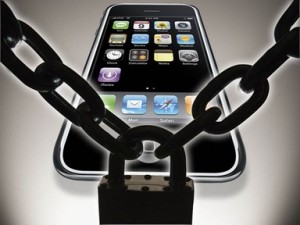By Alhassan Bernice

“My Smartphone can do this, my Smartphone can do that,” I hear a lot of people boast; but there’s a lot of other things your smart phone can do that you have no idea about. I mean ‘bad’, really ‘bad’ things. Hey, it’s not what you probably think. I mean it can do bad things to your health and pose a threat to your life when mishandled.
You need to know these things and tell your family and friends about them because everyone these days seems to have one smart device or the other from the top business executives who actually need them to the little kid who was only a suckling some few years ago. And with pinging being the order of the day, it’s only fair that you also know how to properly manage your Smartphone.
Let’s start with the more obvious dangers from cell phones which range from the increasingly rude behaviors they foster at the dinner tables, restaurants and meetings to the serious accidents that occur as a result of distracted driving and distracted walking in the case of pedestrians. It’s an issue that calls for concern as it’s even more dangerous than drunk driving. It is therefore safe to say social networking (which is what is done most often with smart phones) is responsible for more accidents than the number of real friends you could actually make on these networks each day. This makes it more like antisocial networking and it must become just as socially unacceptable.
For the less obvious dangers which I like to call invisible slow killers, we have radiation from pulsed signals at the centre of it all. These radiations, which are electromagnetic in nature, are known to affect the pacemaker, sinoatrial (S. A) Node of the heart (responsible for regulating the heartbeat), thus, affecting its rhythmic beat. They also interfere with the impulse which the S.A node produces.
Further more, placing phones in the front pocket which is a rather common habit, particularly amongst men can lead to arrhythmic heart beats in the heart. For the women, these radiations have being known to affect the fetus in pregnancy.
It doesn’t end there. Twelve different European laboratories as part of the European Union sponsored REFLEX project have found significant evidence of DNA damage from modern 3G phones’ signals. Also, studies of split samples of human sperm indicate poorer morphology, motility and pathology increase for smart phone exposed samples. In layman terms, people who use smart phones most frequently may be more prone to DNA damage and low sperm count (in men) due to their exposure to these radiations.
There’s more! Radiations also cause increased risk of malignant brain tumors as well as hearing impairments. Studies in Sweden have discovered that those who start using cell phones [in general] as teenagers have four to five times more brain cancer when they become adults. Growing reports also show attention and hearing deficits, migraine headaches, ringing of the ear, autism, behavioral changes and a broadening array of disturbances to the nervous system.
What then is the solution to this long list of alarming health risks? The EWG (Environmental Working Group) suggests the following tips to help reduce cell phone radiation exposures in general:
Buy a low – radiation phone: Look up your phone on EWG’s buyer guide: www.ewg.org/cellphoneradiation/get-a-safer-phone. (Your phone’s model number may be printed under your battery). Consider replacing your phone with one that emits the lowest radiation possible and still meets your needs.
Use a headset or speaker: Headsets emit much less radiation than phones. Choose either wired or wireless (experts are split on which version is safer). Some wireless headsets emit continuous low level radiation so take yours off your ear when you are not on a call. Using your phone in speaker mode also reduces radiation to the head.
Listen more, talk less: Your phone emits radiation when you talk or text, but when you are not receiving messages. Listen more and talking less reduces your exposures.
Hold your phone away from your body: Hold the phone away from your torso when your talking (with headsets or speaker), not against your ear, in your pocket or on your belt, where soft body tissues absorb radiation.
Choose texting over talking: Phones use less power (less radiation), to send text than voice. And unlike when you speak with the phone on your ear, texting keeps radiation away from your head.
Poor signal? Stay off the phone: Fewer signal bars on your phone means that it emits more radiation to get the signal to the tower. Make and take calls when your phone has a strong signal.
Limit children’s phone use: Young children’s brains absorb twice the cell phone radiation as an adult’s. EWG joints health agencies in at least 6 countries in recommending limits for children’s phone use, such as for emergency situations only.
Skip the “radiation shield”: Radiation shields such as antenna caps or keypad covers reduce the connection quality and force the phone to transmit at a higher power with higher radiation.
No matter how smart your device is, you should always be a step ahead; after all you own the phone, not the other way round. Stay informed, stay smart and do what’s right and safe for you and the folks around you.


